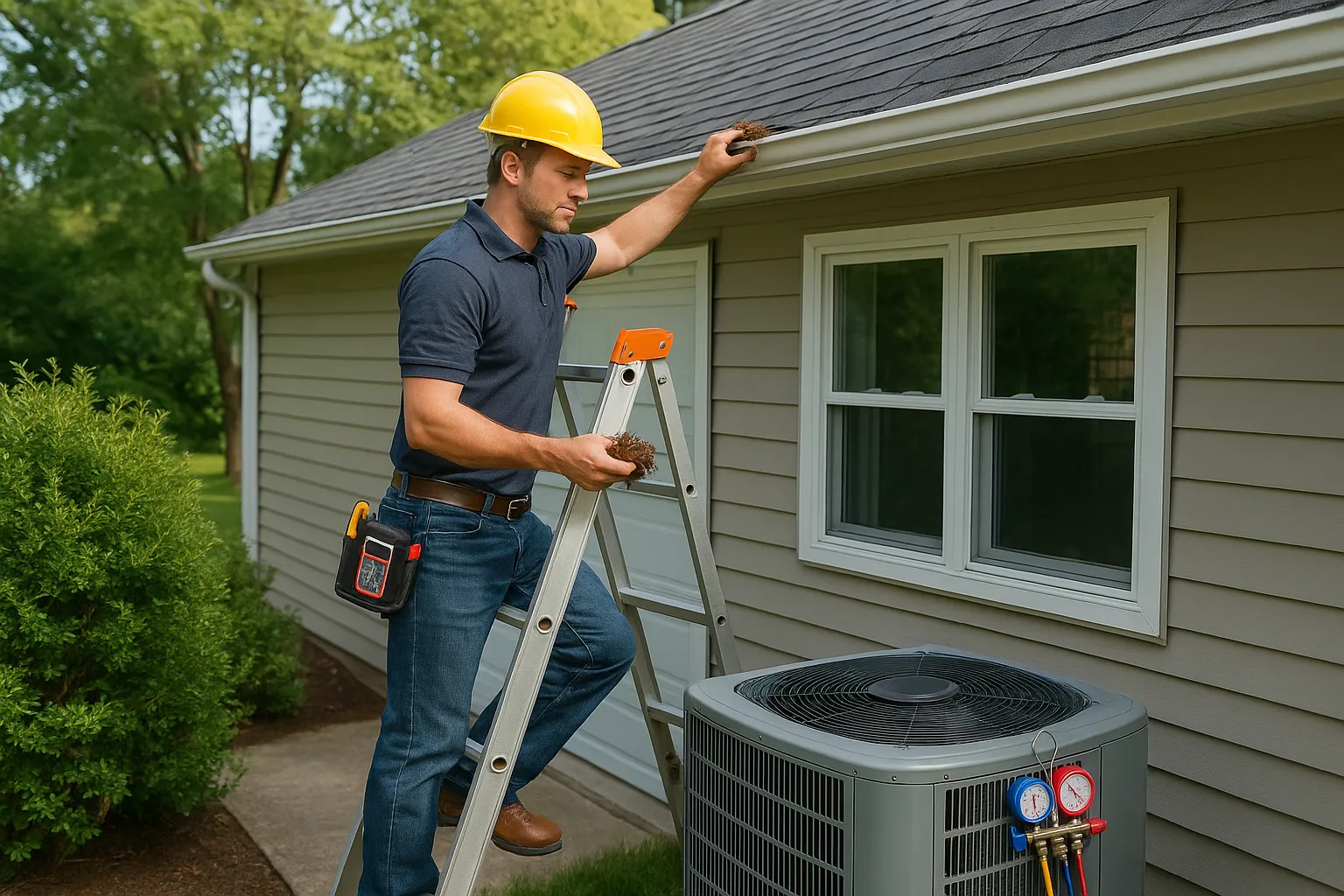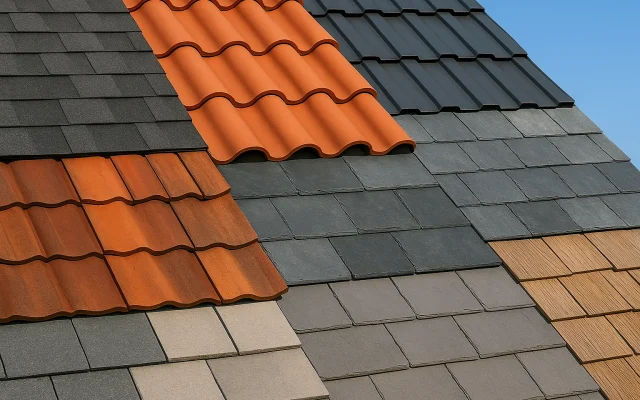Preventive maintenance is one of those topics people agree with in theory and ignore in practice. It sits in the same mental category as flossing, checking tire pressure, and updating passwords—important, yes, but rarely urgent. There’s always tomorrow. Until there isn’t. And that “isn’t” moment? It usually costs a lot more than anyone expects.
Let’s talk honestly about why prevention matters. Why it saves serious money. Why it protects homes, rental properties, and multi-family communities more effectively than any emergency fix. And why, for many property owners, the things they didn’t do last year are exactly what’s draining their budget this year.
This isn’t theory. These are real numbers, real patterns, and real consequences that appear every time someone lets a small issue slide. Maintenance isn’t glamorous, but it’s the quiet hero of long-term savings. Let’s dig in—because working smarter beats paying more.
Preventive Maintenance vs. Repairs: The Difference Is the Cost of Waiting
There’s a huge gap between caring for a building and reacting to a crisis. They feel similar—both involve fixing things—but the cost difference is staggering.
Preventive maintenance is simple. Small checkups. Routine cleaning. Replacing inexpensive parts before they fail. Basic inspections. It keeps your systems healthy.
Reactive repairs are what you do when something breaks. A leak turns into a ceiling replacement. A strange smell becomes an HVAC failure. A flickering light becomes a wiring problem that needs an electrician today. And emergency pricing is never friendly.
Here’s the short version: Preventive maintenance is what you control. Repairs are what control you.
The difference shows up in both your wallet and your stress level.
The Economics of Prevention: Why Small Investments Beat Big Bills
Let’s break this down in a way that matters. Property expenses come in two forms:
- Predictable, affordable maintenance
- Unpredictable, expensive disasters
Homeowners, landlords, and apartment managers who commit to ongoing preventive upkeep spend drastically less over time—because the price of “small” almost always beats the price of “urgent.”
Here’s a simple table to show how ordinary tasks compare to emergency fixes:
| Component | Preventive Cost | Repair/Replacement Cost | Difference |
| HVAC system | $90–$180 annual tune-up | $3,500–$10,000 full replacement | Huge |
| Water heater | $80–$200 maintenance | $1,200–$2,500 replacement + possible flood cleanup | Massive |
| Roof cleaning/inspection | $150–$450 | $6,000–$20,000 replacement | Extreme |
| Plumbing line inspection | $150–$300 | $2,000–$15,000 major leak or slab repair | Painful |
| Electrical inspection | $150–$250 | $2,000–$12,000 rewiring or fire damage | Devastating |
The math’s not subtle. People lose thousands—sometimes tens of thousands—because something small grew unattended.
What makes preventive maintenance so powerful is the compounding effect. A $100 fix done today prevents a $3,000 disaster next year. Over a decade, those savings multiply.
The most surprising part? The majority of major home repairs start as tiny, inexpensive issues. A slow drip. A clogged filter. A loose shingle. A cracked seal. Problems that cost almost nothing to address if caught early.
How Preventive Care Protects Your Home’s Structure and Safety
Every home and building operates like a living system. Each part affects the next. Ignore one weak point long enough and it becomes a chain reaction.
Here’s where preventive maintenance quietly saves you:
1. Water Damage
Water is persistent. Just a small leak can:
- warp flooring
- seep behind walls
- cause mold growth
- damage electrical components
- destroy insulation
Preventive tasks like caulking, clearing gutters, and checking attic ventilation stop this in its tracks.
2. Mold and Mildew
Mold cleanup can cost more than replacing an appliance or two. And mold spreads fast. Ventilation maintenance, roof inspections, and plumbing checks prevent the moisture issues that fuel it.
3. Pest Infestation
Termites, ants, roaches, rodents—many infestations start because of gaps, moisture, or decaying materials. All of these are preventable with small, inexpensive steps.
4. Foundation Damage
Improper drainage and clogged gutters lead water straight to the foundation. The result? Cracks. Settling. Expensive stabilizing work. Basic gutter cleaning prevents thousands in repairs.
5. Fire Hazards
Old wiring, overloaded circuits, or dirty dryer vents are common fire starters. An annual electrical check and dryer vent cleaning are simple life-saving habits.
Preventive maintenance is not just about money. It’s about safety. And safety failures cost more than repairs—they disrupt lives.
Preventive Maintenance That Saves the Most Money (Breakdown by Area)
Every part of a home benefits from preventive care, but some areas offer the largest return on investment. Below are the places where skipping maintenance almost always leads to expensive headaches later.
A. Roof & Exterior: The Line of Defense Most People Ignore
Roofs are the silent guardians of any property. They endure sun, storms, debris, wind, humidity, and every seasonal shift. Yet they’re the part people tend to inspect the least. And ironically, they’re often the costliest to replace.
Preventive roof care includes:
- Moss, algae, and mildew removal
- Clearing debris
- Sealing exposed nail heads
- Inspecting flashing
- Checking for cracked or curled shingles
- Cleaning gutters for proper drainage
- Minor repairs before they expand
This is also where it’s natural to mention working with reliable roof cleaning experts in Tyler, especially for regions like East Texas where humidity and storm debris accelerate buildup.
Why does this matter? Because roof problems escalate fast. A missing shingle? Mild. A slow leak in the attic? Manageable. Weeks of moisture soaking beams and insulation? That’s structural damage, mold remediation, and insurance claims.
Here’s a look at the cost difference:
- Roof cleaning or small repair: $150–$500
- Leak treatment + insulation replacement: $1,000–$5,000
- Structural and drywall repairs: $3,000–$15,000
- Full roof replacement: $6,000–$20,000
Maintenance wins every time.
B. Plumbing Systems: Small Leaks Become Big Problems
Water always finds a way. That’s what makes plumbing issues so tricky—and costly.
Preventive plumbing care looks like:
- Checking under sinks monthly
- Listening for running toilets
- Inspecting water heaters
- Flushing tank systems
- Cleaning drains
- Adding insulation to exposed pipes
- Watching water pressure for irregularities
These steps typically cost very little or nothing. But a missed leak can lead to:
- mold
- wood rot
- warped flooring
- drywall replacement
- foundation cracks
- skyrocketing water bills
Plumbing failures rarely stay contained. They spread outward and downward, affecting everything in their path.
C. HVAC & Ventilation: The System You Feel Every Day
HVAC systems don’t fail overnight. They decline slowly. Airflow weakens. Strange smells appear. Electricity usage climbs. Something sounds off. But because it still turns on, most people ignore it.
Until it stops.
Preventive HVAC care can add 5–10 years to the life of your system.
Key tasks include:
- Annual heating & cooling tune-ups
- Replacing filters every 30–90 days
- Cleaning ducts
- Checking refrigerant levels
- Clearing drainage lines
- Inspecting the thermostat
Consider the cost comparison:
- Preventive tune-up: $90–$180
- Emergency weekend repair: $300–$600
- New compressor: $1,200–$2,500
- Full HVAC replacement: $3,500–$10,000
Preventive maintenance also improves indoor air quality, which affects comfort, health, and energy use.
D. Electrical & Safety Systems: What You Don’t See Matters Most
Electrical issues rarely give clear warnings. A flicker. A weird smell. A slightly warm outlet. Most people shrug these off. But electrical systems aren’t forgiving. If they fail, they fail dangerously.
Essential preventive electrical tasks include:
- Annual panel inspections
- Checking outlets and wiring
- Replacing smoke and carbon monoxide detectors
- Testing GFCI outlets
- Cleaning dryer vents
A $150 electrical inspection can prevent a $10,000 house fire. It’s that simple.
E. Interior Surfaces, Caulking, and Appliances: Small Fixes, Big Lifespan Gains
Inside the home, preventive care often saves money through longevity. Appliances last longer when maintained. Floors last longer when moisture is kept out. Paint lasts longer when humidity levels are stable.
Small tasks include:
- Resealing showers and tubs
- Cleaning refrigerator coils
- Tightening loose hinges
- Lubricating door tracks
- Touching up paint
- Regrouting tile
- Maintaining flooring finish
Many of these tasks take under five minutes. Multiply that by years of avoided repairs and replacements, and the savings become impressive.
The Long-Term Financial Benefits of Preventive Maintenance
Maintenance doesn’t just stop disasters. It grows value over time.
1. Higher Property Value
Homes with a maintenance history consistently appraise higher. Inspectors love seeing routine care. Buyers trust homes that show attention. Even renters notice when a property is well cared for.
2. Fewer Insurance Claims
Insurance companies pay attention to claim frequency. If you avoid claims, your premiums stabilize. If you make claims, they jump.
3. Longer Lifespan for Every System
Take a look at how much longer things last with basic care:
| Item | Typical Lifespan | With Regular Maintenance |
| Roof | 15–20 years | 20–30 years |
| HVAC | 10–12 years | 15–17 years |
| Water heater | 8–10 years | 12–15 years |
| Appliances | 8–12 years | 12–18 years |
The numbers speak clearly. Maintenance adds years—sometimes decades.
Why Preventive Maintenance Matters for Renters & Multi-Family Communities
If you’re renting, preventive maintenance benefits you directly. It reduces outages. Improves air quality. Limits pest issues. Keeps the building comfortable. And it absolutely affects your overall living experience.
For property managers or landlords, preventive care is the key to:
- fewer tenant complaints
- lower emergency repair costs
- better reviews
- reduced turnover
- longer-lasting building systems
A well-maintained community feels safer, healthier, and more desirable. Residents notice. And they stay.
Seasonal Maintenance Checklist: A Practical Routine Anyone Can Use
Here’s a simple, actionable checklist organized by season. It’s designed for homeowners, renters, and property managers.
SPRING
- Roof cleaning and minor repairs
- Gutter and downspout check
- HVAC cooling tune-up
- Pressure wash exterior surfaces
- Inspect outdoor faucets and irrigation
- Replace weatherstripping
SUMMER
- Clean dryer vents
- Inspect attic ventilation
- Seal driveway cracks
- Check exterior caulking
- Monitor humidity levels indoors
- Trim trees and remove debris
FALL
- Gutter cleaning
- HVAC heating tune-up
- Seal windows and doors
- Inspect water heater
- Check roof again after summer heat
- Test safety alarms
WINTER
- Insulate exposed pipes
- Monitor interior humidity
- Check for drafts
- Review attic insulation
- Walk exterior perimeter for signs of damage
A routine like this prevents 80–90% of common problems before they escalate.
Common Preventive Maintenance Mistakes People Make
You can do every task perfectly and still get burned if you fall into these traps:
- Ignoring small warning signs.
- Choosing the cheapest contractor instead of the most skilled.
- Skipping seasonal maintenance and doing everything at once.
- Not documenting repairs or inspections.
- Avoiding high-up or hard-to-reach areas (like roofs and attics).
- Putting off simple tasks because they “don’t look bad yet.”
Every mistake here is preventable.
How to Budget for Preventive Maintenance Without Feeling Overwhelmed
A great rule of thumb: Set aside 1%–2% of the property’s value each year for maintenance.
For a $300,000 home, that’s:
- Low end: $3,000/year
- High end: $6,000/year
It sounds like a lot, but remember—maintenance prevents the $30,000 emergencies.
Another helpful framework is monthly budgeting:
Monthly Maintenance Planning
| Category | Monthly Budget |
| HVAC & filters | $10–$20 |
| Plumbing checks | Free |
| Roof/gutter savings | $15–$30 |
| Electrical safety | $5–$10 |
| Misc. repairs | $20–$50 |
Most people find this approach easier because it spreads the commitment throughout the year.
DIY vs. Professional: Where to Draw the Line
You don’t need to hire a professional for every tiny task. But knowing your limits is essential.
Great DIY Tasks
- Replacing air filters
- Resealing windows
- Tightening screws and hardware
- Cleaning vents
- Caulking small gaps
- Touch-up painting
Hire a Professional For
- Electrical work
- Roofing work
- Structural repairs
- Major plumbing issues
- HVAC repairs
- Mold remediation
A good rule: If a mistake could make the problem worse—or dangerous—hire a pro.
Final Thoughts: Preventive Maintenance Isn’t a Cost. It’s a Strategy.
Here’s the big takeaway. Preventive maintenance isn’t a burden. It isn’t a chore. And it’s definitely not wasted time or money.
It’s a strategy—one that protects your home, your finances, your comfort, and your long-term peace of mind.
Investing small amounts consistently beats being blindsided by expensive emergencies. Every time. With the right habits, the right routines, and the right balance of DIY and professional support, you can extend the life of every system in your home or property.
Start small. Stay consistent. Build routines. Treat maintenance as a form of insurance—because that’s exactly what it is. It pays off now, it pays off later, and it pays off every single time something stays working instead of breaking.
If you’re managing a property, renting an apartment, or taking care of a home, preventive maintenance is the single most reliable way to protect everything you’ve built.
Frequently Asked Questions (FAQs)
Because small issues cost far less to fix early, and preventive care stops minor problems from turning into expensive damage.
Most systems benefit from seasonal checkups, with HVAC, plumbing, and roof inspections done at least once a year.
Roofs, HVAC systems, plumbing, electrical components, and exterior drainage are the biggest money-savers when maintained regularly.
Yes—regular care can add years to your roof, HVAC, water heater, and appliances.
Absolutely, because well-maintained buildings mean fewer breakdowns, better air quality, and a more comfortable living environment.
Minor issues often spread or worsen over time, leading to water damage, structural issues, or complete system failures.
Most experts recommend setting aside 1–2% of the property’s value annually.
Yes—filter changes, caulking, cleaning vents, and basic inspections are all manageable DIY tasks.
Whenever the task involves electrical work, roofing, major plumbing, or anything where mistakes could cause damage or injury.
Yes, because buyers and appraisers view well-maintained homes as more reliable, safer, and more cost-efficient long-term.







